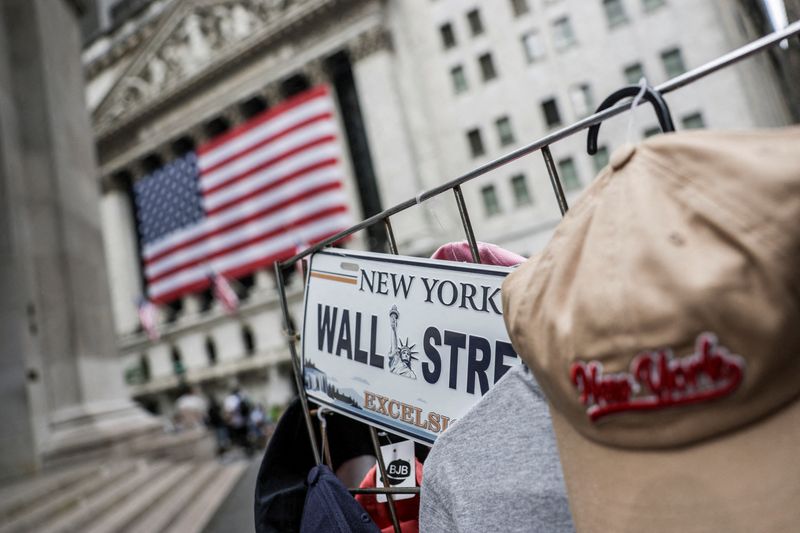By Naomi Rovnick and Alun John
LONDON (Reuters) -The spectre of U.S. stagflation is stalking global markets, causing some investors to position portfolios to dodge the potential damage that tariffs could wreak on growth and inflation in the world’s dominant economy.
Some 70% of global investors surveyed by BofA Global Research in early August said they expect stagflation – the combination of below trend growth and above trend inflation – in the next 12 months.
Recent data showing U.S. labour market weakness, a sharp rise in U.S. core inflation and an unexpected surge in producer prices justifies this concern.
But stocks around the world, including in the United States, remain near record highs and bond markets are calm, suggesting little panic even as U.S. stagflation risks move increasingly onto the radar.
“Stagflation is in the mind of the market, but not the price,” said Carmignac fixed income manager Marie-Anne Allier.
Here’s a rundown of how U.S. stagflation risks could play out across global markets.
BEWARE BONDS
Persistent inflation, or the fear of it, can pummel longer-dated bonds by eroding the real value of fixed interest payments over time.
Paul Eitelman of Russell Investments, which helps institutions manage more than $1 trillion of assets, said pension funds and insurers have become increasingly nervous about inflation hitting their bond portfolios.
“If we had a another very weak employment report, that would significantly ramp up (U.S. stagflation) concerns,” he added.
Nor would non-U.S. bonds offer much protection.
“Interest rates and the long end of the bond curve are highly correlated between the G7 economies,” said Mayank Markanday, portfolio manager at Foresight Group. “If you see a big selloff in the long end of the U.S. curve we are likely to see impact on some of the others.”
There has already been a selloff in long-dated bonds across major markets. While 2-year yields are lower in the U.S., Germany and Britain this year, 30-year yields are higher.
If sticky inflation stops the Federal Reserve from cutting rates this year, short-dated bonds would suffer too.
WALL STREET WOES
Fidelity International multi-asset manager Caroline Shaw said the group expected U.S. growth to slow and stagflation was one of their two core scenarios.
She remains positive on U.S. big tech stocks but in mid-July bought derivatives called put options that would profit should the more cyclical Russell 2000 small cap index fall.
As with bonds, stocks globally are likely to suffer, even if stagflation is confined to the U.S.

